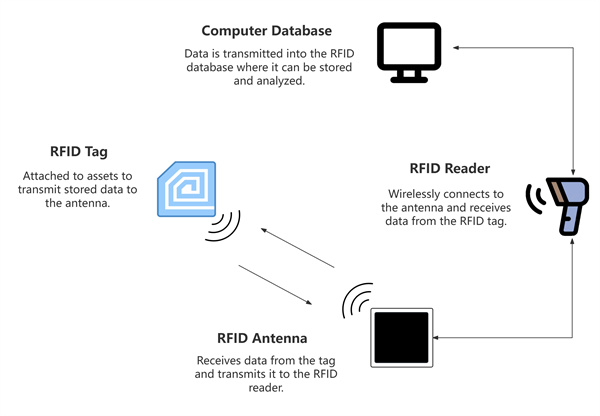RFID technology is emerging as a transformative force. It facilitates wireless data transmission through radio waves and offers a multitude of applications across various fields and industries.
Radio Frequency Identification (RFID) is a wireless communication method that employs electromagnetic or electrostatic coupling in the radio frequency part of the electromagnetic spectrum to uniquely identify items or individuals. It utilizes radio frequency to search, recognize, track items and personnel, and communicate with them. This innovative technology is revolutionizing the way we interact with our environment, enhancing efficiency and accuracy in a myriad of applications.
RFID is a technology that leverages electromagnetic fields to automatically identify and track tags attached to objects. These tags, which contain electronically stored information, can be read from several meters away without the need for direct line-of-sight. Commonly utilized in inventory management, asset tracking, access control, and supply chain logistics, RFID offers an efficient and accurate means of monitoring and managing items, streamlining operations and enhancing productivity across the board.
RFID tags transmit and receive information through antennas and microchips (sometimes also referred to as integrated circuits or ICs). The microchip on an RFID reader can be written with any information the user desires.
In essence, an RFID system consists of three components: RFID tags, RFID readers, and RFID antennas. RFID tags, which contain an integrated circuit and an antenna, are designed to transmit data to the RFID reader, also known as an interrogator. The reader then converts the radio waves into a more useful data format.
Information collected from the tags is subsequently transmitted to the host computer system via a communication interface, where it can be stored in a database and analyzed at a later time.


+86-(0)571-88634319
+86-(0)571-88620157
 English
English 中文
中文 日本語
日本語 한국어
한국어 français
français Español
Español italiano
italiano русский
русский português
português العربية
العربية ไทย
ไทย

